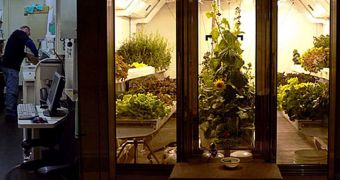In 2004, scientists inaugurated a new research facility near the South Pole. One year later, it was operating at full capacity. Now, the South Pole Station Food Growth Chamber is providing new hopes that future space exploration expedition will be able to feed themselves.
Off-world exploration is a very energy-intensive job, because astronauts that will visit other planets or moons will need to pack all the supplies as they go on their trips. Not so if innovation achieved at the Antarctic growth facility are widely applied.
For all intents and purposes the FGC is a chamber in which plants grow. It represents a small trace of moisture in a very large desert – the Southern Continent – and is reminiscent of Frank Herbert's Dune series, with an icy twist.
It produces an important proportion of the food the crew of the station needs to survive, while at the same time acting like a space where individuals can meet, and feel the soothing effects of vegetation.
The 70-cubic-yard growth chamber does not benefit from sunlight. At the location were the station was constructed, summer only comes between October and February. The rest of the year is all winter.
Regardless, the FGC is capable of producing fresh vegetables such as lettuce, kale, cucumber, peppers, herbs, tomatoes, cantaloupes and edible flowers. Its interior is entirely climate-controlled, experts say.
Due to the inability to obtain dirt at the location, all the crops the chamber produce are grown on so-called hydroponic nutrient solutions, which do not require soil to produce viable plants.
About13 water-cooled, high-pressure sodium lamps are providing the crops with the light they need to grow, so no Sun is required either. The chamber is entirely self-sufficient, which is what astronauts would expect of a greenhouse on another planet.
“Most of us miss green things. We give up fields of grass, flowers and trees when we sign on for a season in this high, cold desert,” explains physician Dr. Ella Derbyshire.
“But the greenhouse is a bright, warm oasis where we can feel water vapor in the air and smell green growing plants. It heals us and reminds us of the living world beyond the ice,” she adds.
An added advantage of having the greenhouse is oxygen production. While the element is not needed on Earth, it would serve an entirely different purpose on a moon that features no atmosphere at all.
As such, the South Pole Station represents a tremendous step forward in underlying our ability to travel to space. The facility is funded by the US National Science Foundation (NSF), but its results may be used by experts at NASA as well, SpaceRef reports.

 14 DAY TRIAL //
14 DAY TRIAL //